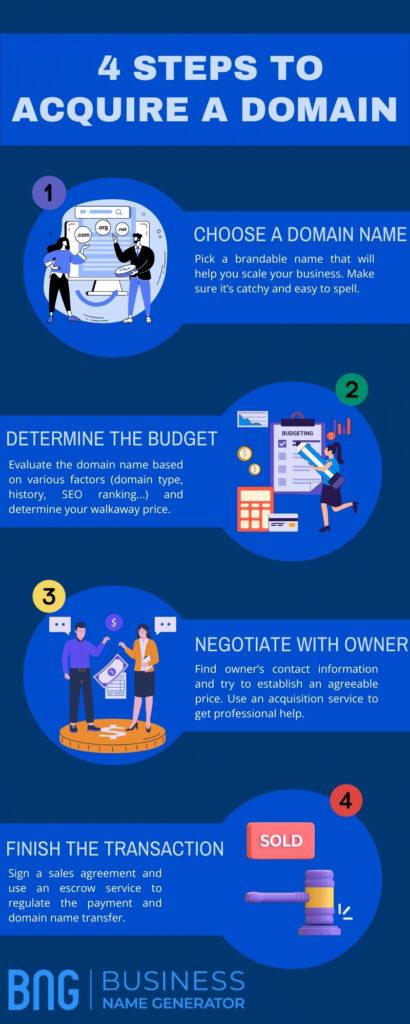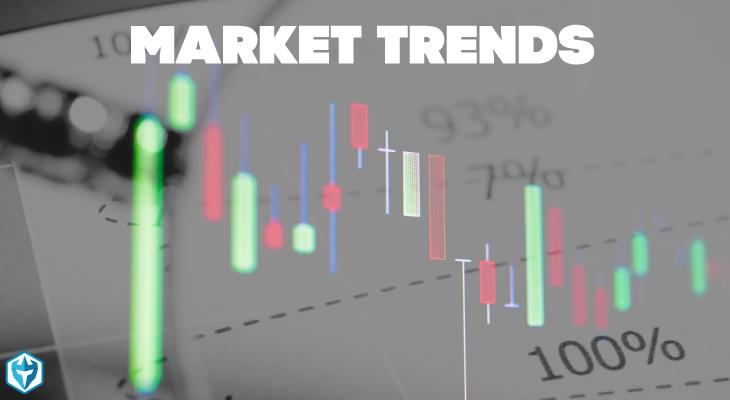Table of Contents
- Exploring the Fundamentals of Domain Flipping
- Understanding What Makes a Domain Valuable
- Strategies for Successful Domain Acquisition
- Evaluating Market Trends to Maximize Profit
- Tips for Selling Your Domain Effectively
- Q&A
- Concluding Remarks


Exploring the Fundamentals of Domain Flipping
Domain flipping is an increasingly popular venture that involves buying internet domain names at a low price and selling them at a profit. This practice requires a keen eye for potential and value when selecting domains. Recognizing factors such as keyword relevance, domain age, and market trends can significantly impact your success. When you find the right domain, you can significantly increase its value through strategic marketing efforts or by developing it into a full-fledged website.
One of the key elements in mastering domain flipping is understanding how to assess a domain’s worth. Factors to consider include:
- Domain length: Shorter domains are often more valuable.
- Extension popularity: .com domains generally have higher demand.
- Search engine performance: Domains with high organic search rankings can fetch a higher price.
- Brandability: Unique and memorable domains are more sought after.
Armed with this knowledge, you can better navigate the buying and selling process. It’s important to keep an eye on auction sites and marketplaces where domains are listed. Many successful flippers also participate in online forums and networks, sharing insights and honing their skills through collaboration.
Once you’ve acquired a quality domain, consider the best methods to increase its value before selling. Here’s a simple table outlining potential strategies:
| Strategy | Description |
|---|---|
| Develop a Landing Page | Create a simple site to attract visitors and enhance perceived value. |
| SEO Optimization | Optimize for relevant keywords to increase search visibility. |
| Market Research | Analyze competitors to understand pricing and demand. |
| Networking | Connect with potential buyers through domain forums and social media. |
By actively employing these strategies, you not only enhance the appeal of your domain but also position yourself as a seasoned domain trader, ready to capitalize on the ever-evolving digital marketplace.
Understanding What Makes a Domain Valuable
When diving into the realm of domain flipping, it’s crucial to grasp the components that contribute to a domain’s valuation. The most significant factor is the domain name itself. Short, memorable names that resonate with users tend to hold more value. Additionally, keyword-rich domains can enhance a site’s search engine visibility, making them more attractive for potential buyers. Consider these elements:
- Length: Shorter domains are easier to remember and type.
- Brandability: A unique domain can serve as a strong brand identity.
- Extension: .com domains are generally more sought after than other extensions, but niche-specific extensions can also be valuable.
Another vital aspect is the domain’s history and metrics. A domain with a positive history, such as good traffic and search engine rankings, can significantly boost its worth. Tools like Ahrefs or SEMrush can help assess a domain’s performance. Key metrics to consider include:
| Metric | Importance |
|---|---|
| Domain Authority | Higher authority indicates credibility and ranking potential. |
| Traffic Volume | Consistent traffic can justify a higher price point. |
| Backlink Profile | A strong backlink profile enhances SEO value. |
Lastly, understanding the target market can significantly influence a domain’s worth. A domain that appeals to a specific niche or industry can attract buyers who see potential profitability. Conducting research to identify what buyers are looking for can help sellers align their offerings with market demand. Key considerations include:
- Market Trends: Stay updated on rising industries or trends.
- Competition: Analyze similar domains in the marketplace.
- Buyer Personas: Understand who your potential buyers are and what they value.


Strategies for Successful Domain Acquisition
When venturing into the world of domain flipping, having a well-defined acquisition strategy is paramount to ensuring your success. One effective approach is to pinpoint niche markets that are not only trending but also establish a genuine demand. Utilize tools like Google Trends and keyword research software to identify emerging industries where consumers are actively searching for digital real estate. This proactive measure not only increases your chances of purchasing valuable domains, but it also positions you ahead of the competition.
Networking plays a crucial role in acquiring desirable domains. Build relationships with current domain owners and participate in relevant online forums and communities. Engaging with these groups can lead to private sales or opportunities to purchase domains that aren’t listed publicly. Leverage social media platforms and professional networks such as LinkedIn to connect with entrepreneurs and domain experts. Collaborating with others often yields beneficial partnerships and leads to exclusive acquisition opportunities that enhance your portfolio’s value.
Lastly, it’s vital to assess the valuation of potential domains before making a purchase. Understanding key factors such as domain length, keyword relevance, and extension type can prevent overspending. Consider using a comparison table to weigh the pros and cons of multiple options:
| Domain Option | Length | Extension | Keyword Relevance | Estimated Value |
|---|---|---|---|---|
| example1.com | 7 | .com | High | $2,500 |
| example2.net | 8 | .net | Medium | $800 |
| example3.org | 6 | .org | Low | $300 |
Evaluating these aspects allows you to make informed decisions, ultimately leading to a more profitable domain flipping experience.


Evaluating Market Trends to Maximize Profit
In the dynamic world of domain flipping, understanding market trends is crucial for making informed investment decisions. Keeping an eye on emerging trends allows investors to identify valuable domains before they become mainstream. Some key elements to consider include:
- Keyword Popularity: Track the rise and fall of specific keywords related to different industries.
- Consumer Behavior: Analyze how changes in consumer habits influence domain valuation.
- Technological Advances: Stay updated on new technologies and platforms that could lead to shifts in domain relevance.
Another aspect to evaluate is the competitive landscape. New startups often seek distinctive and memorable domains to establish their online presence, creating opportunities for flipping. Identifying sectors with growing competition can lead to profitable purchases. It’s also beneficial to track:
- Industry Reports: Utilize resources like industry reports and analytics tools that reveal market shifts.
- Social Media Trends: Monitor platforms where trends often emerge quickly and can signal shifting demands.
leveraging data-driven insights can enhance decision-making. Consider creating a simple table to compare potential investments based on key performance indicators (KPIs). Below is an example of how to structure such an analysis:
| Domain | Keyword Score | Market Demand | Projected ROI |
|---|---|---|---|
| TrendSetter.com | 85 | High | 200% |
| EcoShopper.net | 78 | Medium | 150% |
| TechHaven.org | 90 | High | 220% |


Tips for Selling Your Domain Effectively
When it’s time to sell your domain, preparation is key. Start by determining a fair price based on the domain’s age, length, keywords, and market demand. Tools like NameBio can help you analyze comparable sales. Consider the opportunities for interested buyers, such as businesses looking to expand their online presence or individuals wanting a distinctive brand. Highlight the unique value your domain offers, whether it’s keyword-rich or has potential for high traffic.
Once you’ve established a competitive price, focus on your marketing strategy. Utilize various platforms, such as domain auction sites, social media, and forums related to domain trading. Create an appealing listing that showcases the strengths of your domain, including any existing SEO benefits. Engage with potential buyers through transparent communication, answering questions promptly. Remember to make your listing visually appealing by using concise and catchy descriptions along with captivating visuals.
ensure a smooth transaction process by choosing a reliable escrow service. This protects both you and the buyer, increasing trust in the deal. Prepare a simple table to summarize the domain’s key metrics for easy reference:
| Metric | Details |
|---|---|
| Domain Age | 5 years old |
| Keyword Strength | High Search Volume |
| Current Traffic | 1,500 monthly visitors |
| Social Media Presence | Active Twitter and Facebook accounts |
All these elements combined—pricing strategy, marketing approach, and transaction security—will greatly enhance your likelihood of a successful sale while making the most out of your domain flipping efforts.
Q&A
Q&A: Is Domain Flipping Worth It?
Q1: What exactly is domain flipping? A: Domain flipping is the process of buying domain names at a low price and selling them at a higher price for profit. Investors often look for unique, catchy, or keyword-rich domain names that have the potential to attract buyers for their brand or business.Q2: How do I determine if a domain name is worth purchasing? A: To assess a domain’s value, consider several factors: the length of the name, its memorability, the presence of keywords, and its market demand. Tools like Estibot or GoDaddy’s domain appraisal can provide insights, but personal research and understanding of your target market are equally important.
Q3: What are the common pitfalls in domain flipping? A: Many novice flippers overlook crucial aspects such as market research and the potential risks of holding onto domains too long. Additionally, purchasing domains that are trademarked or violate copyright laws can lead to legal issues and loss of investment.
Q4: Are there any specific strategies to succeed in domain flipping? A: Absolutely! Some effective strategies include focusing on niche markets, monitoring trends for potential keyword domains, networking with businesses that might be interested in your domains, and ensuring good SEO practices to enhance the domain’s value.
Q5: What are the potential earnings from domain flipping? A: Earnings can vary widely based on factors like the choice of domain, market trends, and seller expertise. Some flippers make a few hundred dollars on individual sales, while others can net thousands from premium or highly sought-after domains.
Q6: Is domain flipping a full-time job or a side hustle? A: It can be either! Many individuals start flipping domains as a side hustle, gradually learning the market dynamics until they decide to invest more time. For others, it can evolve into a full-time business as they build a robust portfolio and refine their strategies.
Q7: What initial investment is needed for domain flipping? A: Initial investments can start as low as $10 to $20 to purchase domains from registrars. However, for serious flipping investors, it’s wise to consider a budget for purchasing multiple names, as well as potential marketing costs for listing and promoting domains for sale.
Q8: Is domain flipping a long-term or short-term investment? A: Domain flipping can be both! Some domains are bought with the intent to sell quickly, capitalizing on trends, while others may require patience as they are held for months or even years until the right buyer comes along. This approach often depends on the flipper’s strategy and market knowledge.
Q9: How can I find buyers for my flipped domains? A: Building an online presence through a dedicated website or social media can help attract buyers. Listing your domains on popular marketplaces like Sedo, Flippa, or Namecheap can also expose them to a larger audience actively seeking domain names.
Q10: is domain flipping really worth it? A: Domain flipping can be lucrative for those willing to invest time in research and market understanding. Like any investment, it carries risks, but with the right strategies and persistence, it can indeed be a rewarding endeavor.

